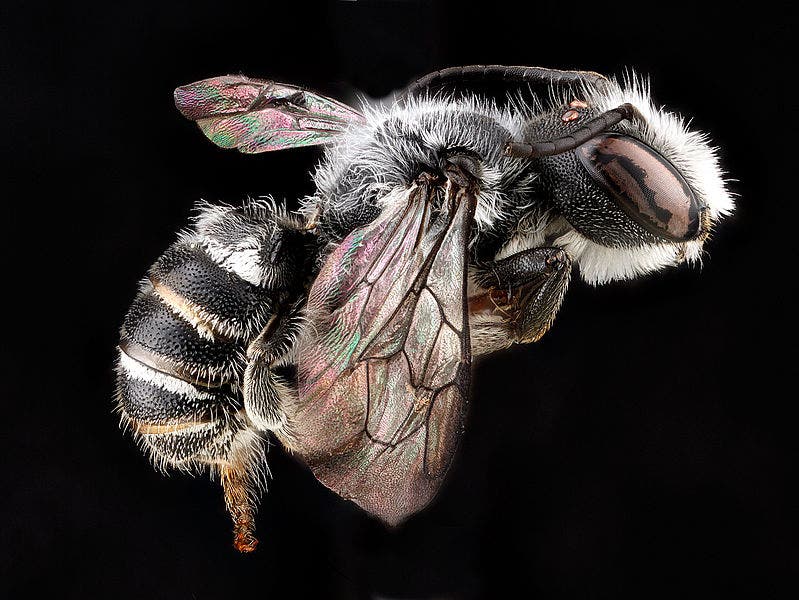Bees are one of the most intelligent insects, and their resourcefulness is well recognized. Despite bee populations as a whole are facing die-offs all around the world, most likely due to pesticides, a number of bee species show amazing adaptability. For instance, in Canadian urban environments biologists and animal behaviorists have surprised many hives which were built using an unlikely raw material – plastic.
In the study reported in the journal Ecosphere., scientists at Univ. of Guelph that some bees use bits of plastic bags and plastic building materials to construct their nests. It took them a while to find this, but after researchers encountered an unusual gooey material that wasn’t seen before in bees’ nests, they decided to perform a detailed analysis. Samples were taken (initially the scientists thought it was chewing gum) and then put under an scanning electron microscope to take highly detailed pictures of items, while x-ray microanalysis determined the elements in the sample and infrared microscopy to identify polymers.
The team found that one particular bee, Megachile campanulae, which usually uses plant resins to build its nests, was occasionally replacing plant resins with polyurethane-based exterior building sealant, such as caulking, in its brood cells–created in a nest to rear larva. Another bee, Megachile rotundata, an alfalfa leafcutter, used pieces of plastic bags instead.
Built it and they will grow
In most cases, a plastic-rich environment is detrimental to animal well being. That’s because often animals choose to ingest them, potentially killing them, instead of using the polymers as a building material as bees do. Actually, in both types of bee populations larvae thrived and hatched inside the plastic-lined nests. The bees emerged parasite-free, suggesting plastic nests may physically impede parasites, the study says.
An important thing to consider is that the bees actually manipulated the plastics differently. It’s not like they mistook it for plants – they actively sought it and developed a new mechanism to process it for their nests. Markings showed that the bees chewed the plastic differently than they did leaves, nor were the leaves hard to come by in their nests’ vicinity.
“Plastic waste pervades the global landscape,” says Scott MacIvor, a doctoral student at York Univ. and a 2008 U of G graduate.. Although researchers have shown adverse impacts of the material on species and the ecosystem, few scientists have observed insects adapting to a plastic-rich environment, he says. “We found two solitary bee species using plastic in place of natural nest building materials, which suggests innovative use of common urban materials.”










